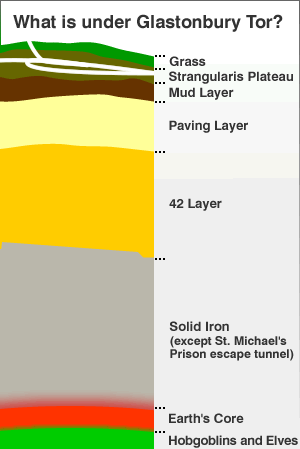Fear over the impact of acid rain has led to the introduction of random pH tests on visitors to Glastonbury Tor – the spot-checks tell whether they are acidic, alkaline or pH neutral.

This marks a return to interest in old fashioned environmental concerns that are increasingly set aside in a world more interested in global warming and that Fukushima thing. But it also comes on top of the new nimbleness assessment that visitors have to pass in order to climb to St. Michael’s Tower at the top of Glastonbury Tor.
Not all visitors are given a pH test as this would take too long, but the testing area has already proved to have a deterrent value, leading to an unusually high number of sherbet lemon sweets being discarded in local car parks.
If visitors are found to be excessively acidic when they are tested then a range of measures are then offered to bring them back to pH neutrality, including a quick wash-down with Neutralia pH neutral shampoo, or in some cases the simple offer of a Rennie indigestion tablet.
Titania Bonham-Smythe, Chief Gatekeeper at Glastonbury Tor is quick to reassure visitors:
“After a while you start to be able to tell which are the more acidic visitors. In some cases it’s when people don’t meet your eye as they walk through the testing station. And if people are rubbing their chest and coughing that’s often a sign they are suffering acid indigestion – it’s the little things that give them away – people with something to hide. Sometimes you just strike lucky. I recently stopped a gentleman, rubbed his forehead with my pH testing swab and could immediately tell that he worked in a Duracell factory – the readings went through the roof! He claimed to be doing us a favour, saying he was going to roll around on the grass and make it have a pH value of 7, but you know it doesn’t work that way – first you let the alkaline battery manufacturers in, then it’s the vinegar distillers, and where does it end?”
“But the fact is, most visitors have nothing to worry about – as long as they are willing to submit to our rigorous regime of pH neutrality they are perfectly welcome to do whatever they want on the tor. Oh, and they will need to keep off the grass, the garlic and large sections of the ancient path that was installed by King Arthur and his merry men.”

